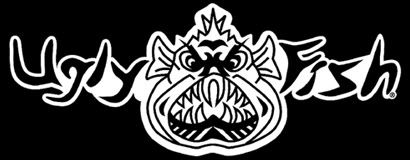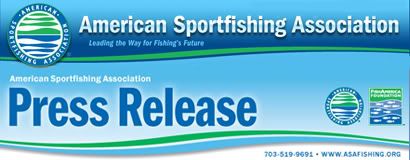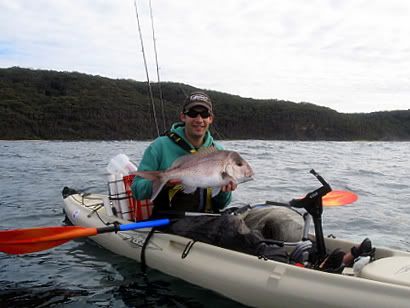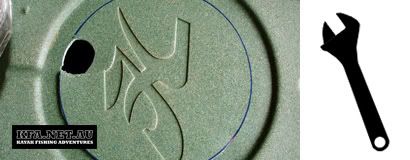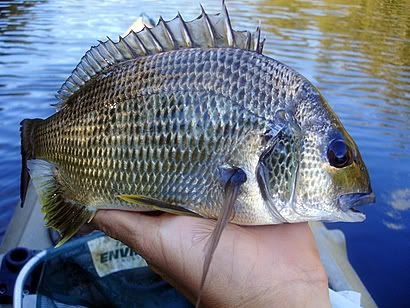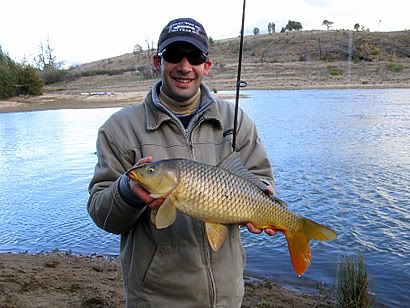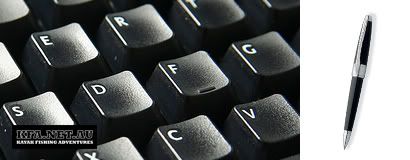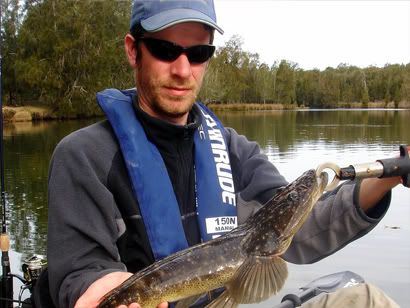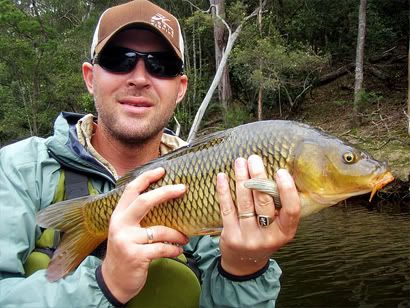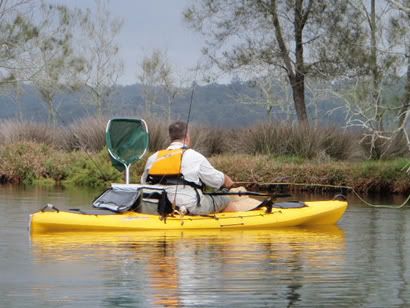
In my opinion, surface luring for Bream, Flathead and Whiting is the most exciting form of estuary fishing available. Watching the lure skipping along on the surface and watching a bow wave form behind it then having your lure smashed off the surface is just so much fun and highly addictive and there is no better water craft than a kayak for this type of fishing. Technique slightly varies between the different species as does lure choice so ill go through a few things that have scored some fish for me in the past.
Finding the fish
Water depth and structure are the first thing you should be looking at before throwing your lure out, fishing the wrong spots will leave you without any success and the poor old surface lure gets chucked back into the tackle box never to see the light of day again. All of my best fish have come from water depths between 0.3m to 1.5m, i never fish any deeper than 2m and only fish that deep when its a clear hot summer day. Shallow sandflats where you would find saltwater yabbies are a ideal place to start, along with shallow weedbeds particuarly if you can find some with sand patches through it.
It doesnt matter how shallow these flats are, as long as the weed isnt on top of the water your surface lure wont foul up on weed and it will suprise you to see how big some of the fish are that come off the very shallow flats. Fishing the front edge of weedbeds where they drop into deeper water are also a great place to look, fish will hide in the weeds waiting for baitfish to pass by and ambush anything edible that crosses nearby. Retreiving your lure either accross the front of the weedbed or over the top of it often results in some fantastic fishing.
Lure choice
I keep a large range of surface lures with me on the water, different sizes and colours are always in the tackle box and most have landed plenty of fish. The sizes i use range from 35mm up to 70mm in various different brands and colours. Colours i prefer are the more natural ones like baitfish or prawn colouring, and more often than not transparent. There are a few different types of surface lures, but the two types i prefer are the poppers which splash and make the bloop sound, and the walk the dog style lures that dart and zigzag accross the surface which are usually the better lure on calm bright days.
Equipment and tackle
A good quality spinning combo will make your experience much more enjoyable, surface luring all day long can get quite tiring, its especially hard on your wrist so a nice light and well balanced combo is going to keep you fishing better and longer. Graphite rods in the 6-7ft ranger are ideal, i prefer the shorter 6ft rods matched with a 1000-1500 size spinning reel. As with most fish species, light line will catch you more fish, the only down side to this is if a big flathead decides to take your lure you want to have some sort of chance of getting her in. I found that 4lb braided mainline with a 6lb leader of good quality is ample for getting a majority of the larger flatties in and the light 4lb braid will give you good casting distance. Your hooks are also very important, most lures come with cheaper treble hooks so i always upgrade the trebles to Owner stinger's before i take the lure out for the first time.
Techinque
Your retreive style and speed will play a large part in what you will catch. Whiting prefer a fast, quite aggressive retreive with no pauses. Slowing the lure down a little then speeding back up will often entice the fish to strike, but ive found as soon as you pause the lure, most of the time a whiting will shy away from it. With the fast aggressive retreive i find the popper lures to be the best when specifically targetting Whiting. Bream will hit either of the two surface lures i mentioned but the retreive is slightly different, although you will still get the odd bream here and there using the technique aimed at whiting, but not as many as you could be.
Slow the retreive down for bream, add a few twitches to the lure then pause for around 5 seconds, and repeat until your lure is back to you or a nice big bream comes along and swipes the lure off the surface. Bream commonly take the lure with a gentle slurp while its paused so always be ready. Flathead i find are a little harder to target specifically, plenty are taken using both methods mentioned above but the most reliable way of getting them is a very slow retreive, just a twitch or 2 of the lure then pause, similar to bream just slower retreives and sharper twitches using the bigger 60-70mm lures over sand patches in the weedbeds or the edge of a sandy drop off.
Getting the technique's right can be frustrating at times, but the rewards in the end make it a worthwile procedure and i guarantee you will be glad you put the time and effort into learning how to catch fish on surface lures, it truly is a spectacular way of fishing for the more common estuary species







